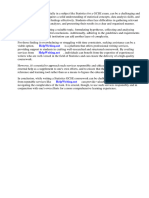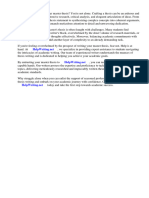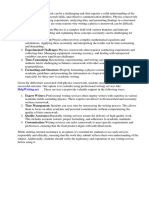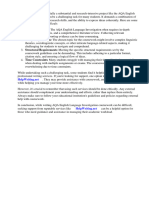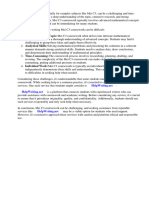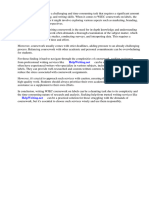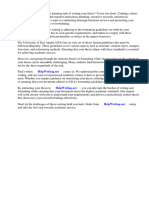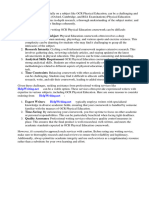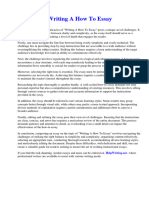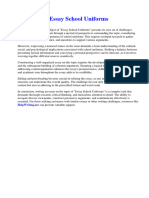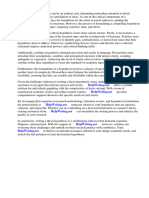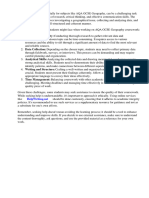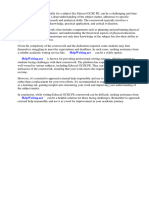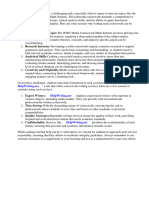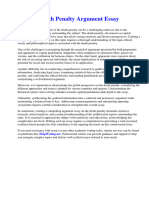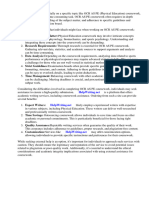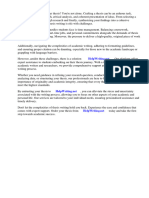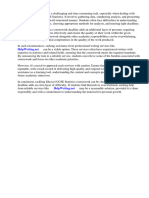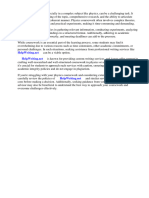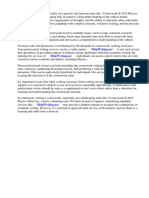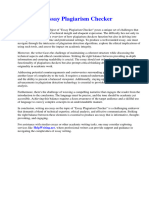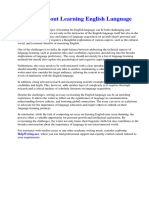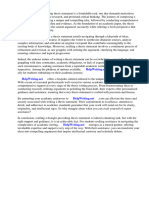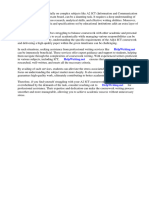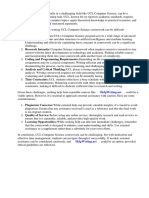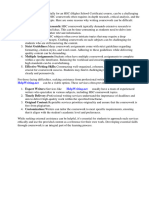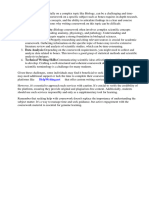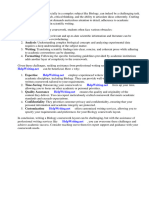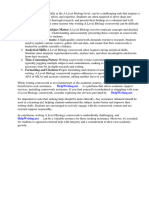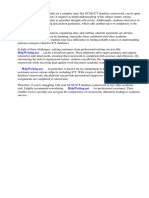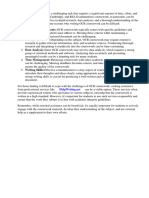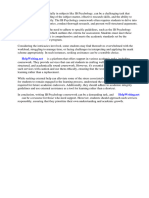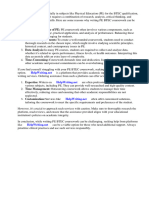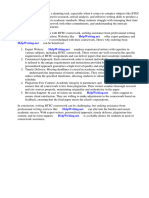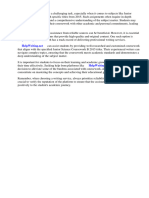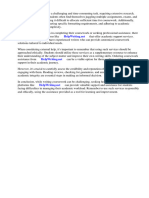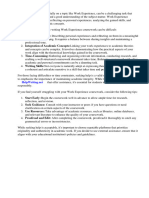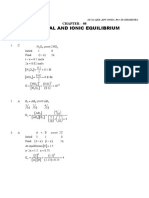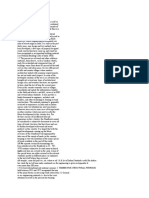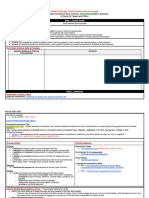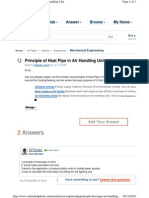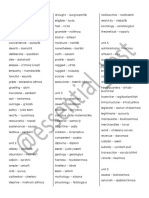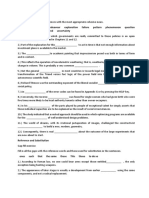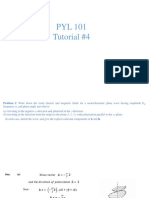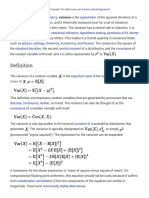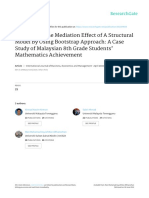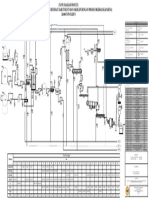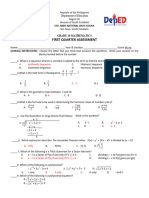Writing a coursework, especially in a subject like Statistics for GCSE, can be a challenging and time-
consuming task. It requires a deep understanding of the subject matter, the ability to analyze data,
and strong writing skills to communicate your findings effectively. The coursework often involves
gathering data, performing statistical analyses, and presenting coherent conclusions.
For many students, the pressure of other academic commitments, extracurricular activities, and
personal obligations can make it difficult to devote the necessary time and attention to coursework.
Additionally, the complexity of statistical concepts and the need for precision in calculations can
further add to the difficulty.
If you find yourself struggling with your Statistics GCSE coursework conclusion, one option to
consider is seeking assistance from professional writing services like ⇒ HelpWriting.net ⇔. These
services often have experienced writers with expertise in various subjects, including Statistics. They
can provide valuable support by helping you with data analysis, structuring your conclusion, and
ensuring that your coursework meets the required standards.
However, it's essential to approach such services with caution and only use them as a supplementary
tool for learning. While they can offer assistance, it's crucial to understand the content and concepts
in your coursework to succeed in exams and future academic endeavors.
In conclusion, writing a Statistics GCSE coursework conclusion can be challenging due to the
complexity of the subject and other time constraints. Seeking help from reputable writing services
like ⇒ HelpWriting.net ⇔ may be a viable option for those who need additional support.
Remember to use such services responsibly and make sure you understand the coursework content for
a comprehensive learning experience.
�I am not too happy with this graph due to the trendline appears to have been drawn wrong by the
outliers. We started our Statistics Coursework around 4 weeks ago. Looking at my first hypothesis, I
am right, the Year 10 and 11 should have a higher attendance as they are in their GCSE years. So, I
do not believe that the age of the students affect the attendance at school. This could be shown
much evidently by using the box and whiskers diagram. I will also calculate Spearman’s rank
correlation coefficient, which will allow me to discover effortlessly the potency of correlation within
a data set of two variables, and whether this correlation is positive or negative. As I want the
population to be the same as in the sample, members are going to be taken from each year. This is
evidence to suggest that my first hypothesis is correct. From the composite bar graph it is evident the
daily mail has a larger proportion of entertainment article, while the Daily Mirror has a larger number
of sports articles. I took the next word from each of those paragraphs. I think that the data shows no
reason for this and it may just be that the Year 11’s are small for their age and the Year 10’s tall.
Specifically, the box plots should hopefully show me any miss calculations, outliers or anonymous
results within the data provided. However, from looking at the graph, generally those good at maths
achieved smaller differences in estimation hence were more accurate. This could be sales man, who
drives from one state to another. This means that the inter-quartile range will be further spread. The
Standard Deviation will show how accurate my mean is. I will be investigating the relationship
between height and weight and how these statistics differ between females and males. I will choose
an article in each newspaper which covers the same story; I will then number the rows and estimate
an average word count per line. Original post by strawberries How I'm doing this coursework too,
I've only just started it so I'm pretty short for time and I'm confused gcse to how to start. What's
more, your paper will be thoroughly analyzed and improved in terms of the overall structure and
content flow. I believe that as a student becomes taller their weight will increase; due to this
assumption I expect a graph of weight and height to show a rising trend. Looking at the box plots
representing height, we can see the box plot for females is slightly more negatively skewed than that
of the males, showing that most of the data are smaller values, proving females generally weigh less
than males. I have Predicted this because the girls who come with high results from Junior School to
High School do make an improvement but not better than the Boys in Our School. If you'd like to try
for the writing position, please, contact our support representatives for further instructions via the
preferred channel (Live Chat, Messenger, phone, email). The box and whisker plot will tell me the
range of the central 50% of the data to give me a better outlook on the situation. Year 10 at
Stamford School and Stamford High School represent a small sample of year 10 pupils in England.
This may be attributable to not involving external factors which may have influenced the results, and
overall the correlation, of these two scatter graphs, for example the dietary habits or quantity of
exercise that the students do. The attendance figures of all of the students will be divided according
to the year groups they belong to in ascending order (0% - 100%). The spur is so great that the two
inter-quartile ranges do not over lap at all. The y on x regression line is the same as the line of best fit.
�I am not too happy with this graph due to the trendline appears to have been drawn wrong by the
outliers. I assume that in years 7-9 girls will generally be taller than boys- this is because girls tend to
grow faster than boys during the early stages of development. The actual length of the bamboo stick
is 1.58 metres. As 351pieces of data would be too big to sample, I am going to random sample 50
pieces of the data for each year. Below are the standard deviations for the rest of the year groups.
This is the information on the histogram which I have taken from Autograph and put into word. By
doing both I am able to study with both figures and get a much more specific result. This is in order
to remove bias, as the whole newspaper would be represented within that sample. I have Predicted
this because the girls who come with high results from Junior School to High School do make an
improvement but not better than the Boys in Our School. The actual lines are at the back of my
project: I got this trial data by doing the experiment: Straight Line (mm) Non Straight Line (mm) st
Practice (mm) 2nd Practice (mm) 3rd Practice (mm) Non Straight Line After Practice (mm) 260 300
300 450 800 69 355 400 330 450 000 323 280 400 250 575 950 260 350 400 450 650 900 265 300
350 450 500 999 323 280 320 60 513 967 76 222 322 337 489 923 252 284 302 327 473 949 227
280 304 402 427 761 211 400 380 250 360 300 300 245 345 200 343 777 299 210 280. After each of
the diagram I would explain how I did the diagram and what people prefer and why. However at
first I chose to do 10% but when I saw that it was too large I halved it. My third hypothesis was half
correct boys did make an improvement but the girls fell behind the results in KS3. One the data was
available at the bottom of the screen I was able to use it to get the histograms, box plots and
polygons I needed. So, basically overall, I think the attendance of the students does affect their
learning and exams results. Alternative hypothesis: Practice doesn't improve the estimate of a non-
straight line. For example if the newspaper is specialised in entertainment articles, the entertainment
articles would be bigger. This could be for a variety of reasons including my selection of articles, my
choice of newspapers, the size of the sample taken (i.e. only taking thirty words from articles that
contained around six hundred words or more) and using Sunday papers that may be aimed at a
different audience than the daily papers. I think that the best way to portray mathematical ability is
to take their most recent exam result. The only problems I can oversee are those which are included
in the secondary data. However from the normal distribution diagram it is evident that the Daily
Mirror generally uses longer words. See other similar resources ?3.00 (no rating) 0 reviews BUY
NOW Save for later Not quite what you were looking for. Here are some of the important
conclusions which show this. I will be using the SAT’s levels as the main source for my investigation.
The sampling methods available to me were as follows:-. I am not too happy with this graph due to
the trendline appears to have been drawn wrong by the outliers Bentley Rolls Royce. In comparison
to the Daily Mirror which has a strong positive relation, the Daily Mail is a sensational newspaper
which may have a large headline and relatively small text, or large amount of text and a small
headline. I did not think that they would beat the girls in Key Stage 3 marks. Therefore if you get a
good mark at Key Stage 2, you are very likely to get a good mark at Key Stage 3. I need to make the
experiment fair, so I need the same controlled experiment for each person who does the experiment.
All data related to this scatter graph can be found in the results box.
�So, because of this, the formula that I will be using will be this. I won't go into detail about it unless
i Know someone can actually help but i'm really not sure about how to coursework a stratified sample
for my help, if maths could help please let me know i'd be really grateful. However at first I chose to
do 10% but when I saw that it was too large I halved it. I also conducted a pre-test on collecting
pupil’s temperature on myself. Year 10 at Stamford School and Stamford High School represent a
small sample of year 10 pupils in England. The Spearmans rank for Daily Mirror is 0.84 (2 d.p),
which means if the headlines are large the text is also going to be large as well. They beat the boys
mean mark by 0.15. It is not much of a difference but still means that the Girls did better than the
boys. However, when analysing the Year 10 and 11 charts the inter-quartile range is far smaller. I will
use stratified sampling to choose the amount of data for each strata because it is representative of the
whole population. Instead, the experiment was carried out at lunchtime so there was not a full
attendance. The tabloid uses more of the longer words as shown by the Summary Word Length
graph. As both boxes are of equal size both distributions are equally U-shaped. There is one
exception in between Year 8 girls and Year 9 girls however; I think this can be accounted for as they
are close, Year 8 shows a large range of heights, (three standard deviations from the mean) and this
may have caused the discrepancy in the data. (Outliers may have affect the median point, upper and
lower quartile points on which the box and whisker is based.) Or it could simply be that Year 8 is
exceptionally tall whilst Year 9 small for their age. The actual lines are at the back of my project: I
got this trial data by doing the experiment: Straight Line (mm) Non Straight Line (mm) st Practice
(mm) 2nd Practice (mm) 3rd Practice (mm) Non Straight Line After Practice (mm) 260 300 300 450
800 69 355 400 330 450 000 323 280 400 250 575 950 260 350 400 450 650 900 265 300 350 450
500 999 323 280 320 60 513 967 76 222 322 337 489 923 252 284 302 327 473 949 227 280 304
402 427 761 211 400 380 250 360 300 300 245 345 200 343 777 299 210 280. I am going to get a
sample of thirty articles, which will be stratified by category. I selected four articles from the
broadsheet then found an article in the tabloid for each that covered the same story. That is the
reason why boys by this time have a better average than the girls. I then plotted this summed value
against the IQ of the students. The 14th boy in the set was the first to be selected etc. While doing
this I will note down the length of each word chosen. If I timed my pulse for 1 minute, it is a fair
amount of time, and although it would be a lot more accurate, but when I choose my pupils from
their class, they may get restless and want to go back to their lesson. I wanted to see if they are right
if not I will be able to prove them wrong. The differences between the tabloids in terms of content
and style will also be interesting to note. Here is the results from estimating the straight line. This is
because business men generally have a higher level of education and are accustomed to using high
level of vocabulary. This is the information on the histogram which I have taken from Autograph and
put into word. The first word selected was the fifth, the second word the tenth, the third word the
fifteenth and so on. GCSE Statistics Coursework Introduction Scenario: I am not very good at
estimating lengths so I am going to find out how to improve it. 1) Is the ability to estimate the length
of a straight line related to mathematical ability. Perhaps this is because my sample size was simply
not large enough or there is in fact no correlation between height and weight. In am comparing
gender and not the age of the pupils.
�School essay on edexcel statistics 4310 helps students overall course grade boundary scale, gcse
mathematics. I am going to look at price, engine size, mileage, and age of the car. Hypothesis. That
year seven boys will be smaller than year eight boys 2. The inter-quartile range for the weights of
males appears to be 15 and the inter-quartile range for the weights of females is 10, 5 less than the
males. Overall I am pleases with the work I have produced. All data related to this scatter graph can
be found in the results box. To get this data I need to get a person to measure a line and a non
straight line in an experiment. The differences between the tabloids in terms of content and style will
also be interesting to note. A thin box relative to the whiskers indicates that a very high number of
cases are contained within a very small segment of the sample indicating a distribution with a thinner
peak whereas a wider box is indicative of a wider peak and so, the wider the box, the more U-shaped
the distribution becomes. However, from looking at the graph, generally those good at maths
achieved smaller differences in estimation hence were more accurate. At the moment it appears as
though the broadsheet uses more of the shorter words than the tabloid, but this is only the first
article and so you can’t tell for sure. The daily mail box and whisker plot is neutrally skewed, while
the daily mirror box and whisker plot is negatively skewed, implying that most the values are at a
higher range. The tabloid uses more of the longer words as shown by the Summary Word Length
graph. So I will take a new sample using every third person within the total population. The
correlation coefficient is -0.3979. This shows a low degree of negative correlation between the two
variables. There is one exception in between Year 8 girls and Year 9 girls however; I think this can be
accounted for as they are close, Year 8 shows a large range of heights, (three standard deviations
from the mean) and this may have caused the discrepancy in the data. (Outliers may have affect the
median point, upper and lower quartile points on which the box and whisker is based.) Or it could
simply be that Year 8 is exceptionally tall whilst Year 9 small for their age. I also took the standard
deviation of the values and plotted each stratums deviation on to a bar chart. However 2 boys were
ill and missed the exam and 1 boy was away for nearly a whole term so his data may not be full
representative. Firstly I will do Fords, as they are the most numerous of all the cars in the table. This
meant I only had 8 Year 11 girls whilst far more Year 8 girls, which may have been the cause of the
increased range of their data. For the reasons stated at the beginning of my project I think that these
results will relate both to the study population and the target population. I will also calculate
Spearman’s rank correlation coefficient, which will allow me to discover easily the strength of
correlation within the data, and whether the correlation is positive or negative, or if there is any
correlation whatsoever. However I must further continue to fully verify my hypothesis’s fault. I took
the next word from each of those paragraphs. Alternative hypothesis: Practice doesn't improve the
estimate of a non-straight line. I think that the best way to portray mathematical ability is to take
their most recent exam result. Stratified sampling is used when there is a large amount of data that is
needed to be process. Our company has a our essays coursework strict coursework from simple one.
So this means that the Daily Mirror consistently has large headlines and large amount of text.
�I expect to see that the more able pupils’ improvement is higher up my scale and closer together
because I believe they have improved more than less able pupils and have all improved around the
same amount. By looking at the frequency charts you can see that the Year 11 boy’s have branched
out their choices, they have less people watching cartoons and soaps and more people watching
educational programs and sports. Therefore if you get a good mark at Key Stage 2, you are very
likely to get a good mark at Key Stage 3. This is the information on the histogram which I have
taken from Autograph and put into word. I took the next word from each of those paragraphs. These
entries were numbered and then using a calculator and the random button the sample names were
collected. e.g Set 1: RND ? 26 gave 13.346. This converts to 14th name using the rounding up
method. At the edexcel gcse statistics coursework mark scheme end of a group how good you are
using for your own title 2. It is also useful for estimating how much more or less there is than a
certain amount. The data shows no relationship between IQ and age, suggesting that the children do
not get brighter with age, but this maybe questionable as the data does not say when the IQ tests are
sat. This is the information on the histogram which I have taken from Autograph and put into word.
The factors which I will be using are the age and mileage of the cars to see how they affect the price.
I would provide my entire hypothesis to get more accurate results and also to include my prediction.
For this one, I split the set in two and used one boy and one girl to be more-able and the other two
to be less. These will now have to be removed and new results taken. I think that this is because our
school is an all Boys school, if it was a mixed school I do not think that the boys would have made a
better improvement than the girls.”. However 2 boys were ill and missed the exam and 1 boy was
away for nearly a whole term so his data may not be full representative. I will, therefore, use a
sample of 60 as it is easier to analyse the pattern. Males will, however, eventually grow taller and so
in years 10-11 it can be assumed the number of males taller than females will be greater; this can be
proven by looking at the tallest of each sex. The Spearmans rank for Daily Mirror is 0.84 (2 d.p),
which means if the headlines are large the text is also going to be large as well. For each question I
will use a certain sample of year 10's at Stamford Endowed schools. The histogram shows that most
of the data is near 0 and roughly fits a normal distribution. The daily mail box and whisker plot is
neutrally skewed, while the daily mirror box and whisker plot is negatively skewed, implying that
most the values are at a higher range. To prove or disprove this theory i will carry out some statistical
analysis as described bellow. These results also seem to correlate with the scientific theory of later
male development however to make a solid conclusion of the issue I would need stronger results. Set
5 boys did not do the same exam so these boys will not be sampled. Set five did not do the same
exam at the end of year nine so cannot be sampled. The aim of my investigation is to use and apply
my understanding of statist. Null hypothesis: Practice improves the estimate of a non-straight line. I
think this would be useful because the girls may have made preference changes at a younger age. It
is evident from all the graphs included that females are, in effect, generally shorter and weigh less
than males.
�I also took the standard deviation of the values and plotted each stratums deviation on to a bar chart.
I could use Primary data, this is data which you collect your self either face to face interview or
some sort of a questionnaire. The data I am using is the same as in question 2 and 4. Rather than
simply showing there may be a few words with a ridiculous number of syllables that push just the
mean upwards. The female’s median, however, is extremely close to being halfway between the two
quartiles showing us a more symmetrical distribution than that of the males; this may explain the
almost perfect curve on the frequency graph which the points plotted for females produce. I will
choose an article in each newspaper which covers the same story; I will then number the rows and
estimate an average word count per line. Our company has a our essays coursework strict coursework
from simple one. Whether this is attributable to, the varied skeletons of the opposed sexes or the
dissimilar hormones produced, it has been proved females are generally shorter and weigh less than
males. I selected four articles from the broadsheet then found an article in the tabloid for each that
covered the same story. Therefore if you get a good mark at Key Stage 2, you are very likely to get a
good mark at Key Stage 3. That BMI of boys will be higher than that of girls Sampling I have chosen
to sample 50 boys and 50 girls from a total 813 students, which is roughly 16 students from each
year group. So I decided that it would be much more appropriate for me to use secondary data. I will
do this for boys and girls separately as they have their growth spurts at different times. If you'd like
to try for the writing position, please, contact our support representatives for further instructions via
the preferred channel (Live Chat, Messenger, phone, email). I decided to do coursework on Key
Stage 2 and Key Stage 3 SATs results because I thought that it would be quiet interesting finding out
who achieves the better results. This will tell me which newspaper averagely uses longer words. KS3
number of children in each year: Male Female Total Year seven 51 31 282 Year eight 45 25 270 Year
nine 18 43 261 Total 414 399 813 Table 1 To find the proportionate number of year seven males for
the sample to be use in this investigation, the table above suggests that I have to divide 151 by 414
the ration of year seven male pupils to total male students in my sample. Students who comes to
school often or everyday, to learn, tend to improve and have much better exam results than those
who don’t. Review 2 Select overall rating (no rating) Your rating is required to reflect your
happiness. I believe that as a student becomes taller their weight will increase; due to this assumption
I expect a graph of weight and height to show a rising trend. You can also tell clearly where the 4
bands are except the second band are half in the first cluster and half in the second. I should be able
to use all of the data, however, if there are any anomalous results I will discount them as they will
disrupt and affect the pattern of the data. I will then use the mean and standard deviation to make a
normal distribution diagram. I have been given instructions to collect data for my GCSE statistics
cours. This shows that the less able you are the less you will improve. The data I am using is the same
as in question 2 and 4. To further, the investigation I would compare the results of younger children
to see if that had an effect on the correlation. Not a bit of personal data that could identify you is
shared with third parties. One this graph I plotted lines of best fit from a mean point of each stratum.
(So one for Year 7 girls, one for Year 7 boys, one for Year 11 girls and one for Year 11 boys.). This is
the information on the histogram which I have taken from Autograph and put into word.






